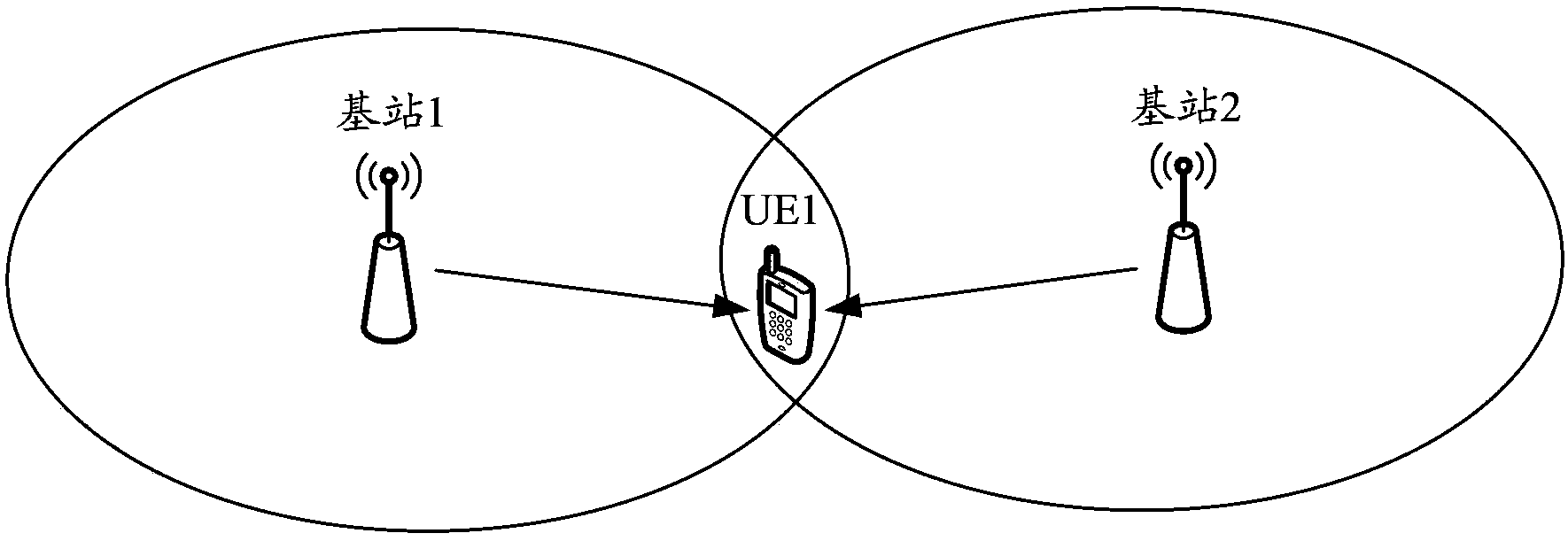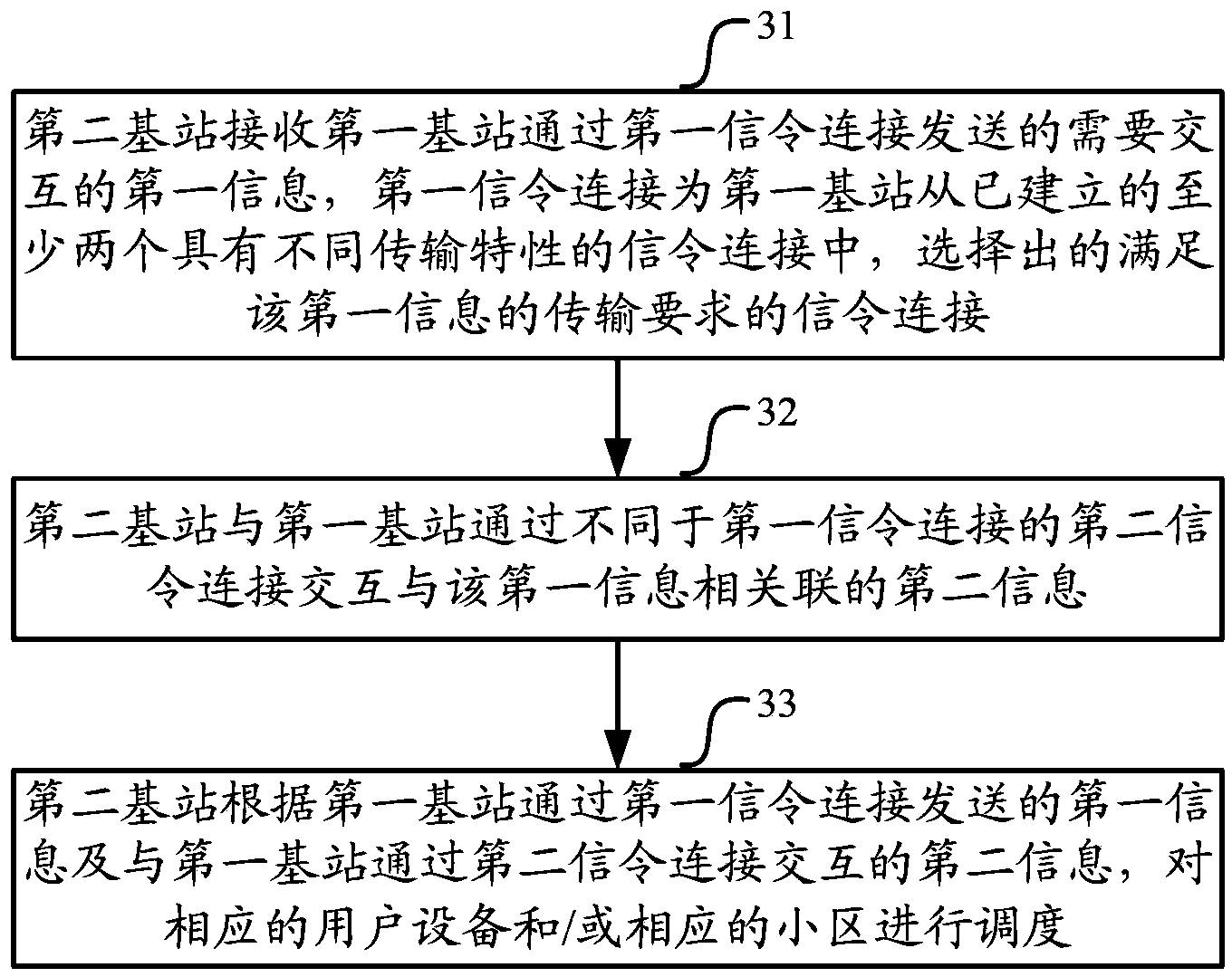Method and device for transmitting information between base stations
A transmission method and a technology between base stations, which are applied in the field of information transmission methods and devices between base stations, can solve problems such as inability to exchange information in time, affect system transmission performance, transmission delay and transmission capacity limitations, etc., so as to improve timeliness and improve Efficiency, Guaranteed Gain Effect
- Summary
- Abstract
- Description
- Claims
- Application Information
AI Technical Summary
Problems solved by technology
Method used
Image
Examples
Embodiment 1
[0117] Embodiment 1. In this embodiment, it is assumed that two types of signaling connections are established between the first base station and the second base station, namely: signaling connection A with a small delay (such as delay ≤ 2 ms) and a signaling connection A with a large delay (such as time delay ≤ 2 ms). 10ms) signaling connection B, the transmission process of information between base stations in this embodiment, see Figure 4 As shown, it specifically includes the following steps:
[0118] Step 41, the first base station sends information A to the second base station through a signaling connection A, wherein the information A includes indication information of information B to be sent by the first base station;
[0119] Wherein, the indication information includes one or a combination of the content of information B, delay tolerance, sending period, information length, and signaling connection used;
[0120] Step 42: After receiving the information A, the sec...
Embodiment 2
[0123] Embodiment 2. In this embodiment, it is assumed that two types of signaling connections are established between the first base station and the second base station, namely: signaling connection A with a small delay (such as delay ≤ 2 ms) and a signaling connection A with a large delay (such as time delay ≤ 2 ms). 10ms) signaling connection B, the transmission process of information between base stations in this embodiment, see Figure 5 As shown, it specifically includes the following steps:
[0124] Step 51, the first base station sends information A to the second base station through a signaling connection A, wherein the information A includes indication information requesting information B sent by the second base station;
[0125] Wherein, the indication information includes one or a combination of content of information B, delay tolerance, sending period, information length, and used signaling connection.
[0126] Step 52. After receiving the information A, the seco...
Embodiment 3
[0128] Embodiment 3. This embodiment is applied to the scenario of updating parameters of downlink multi-flow (multi-thread) transmission. In this embodiment, it is assumed that two types of signaling connections are supported between the serving base station and the coordinated base station, namely: small delay The physical layer connection (hereinafter referred to as signaling connection A) and the long-delay and high-accuracy X2 connection (hereinafter referred to as signaling connection B), the target user equipment is at the edge of the two cells and belongs to the serving base station; For the transmission process of information between base stations in this embodiment, see Image 6 As shown, it specifically includes the following steps:
[0129] Step 61. The serving base station determines that the user equipment needs to perform downlink multi-flow transmission according to the reference signal received power (Reference Signal Received Power, RSRP) feedback or CSI feed...
PUM
 Login to View More
Login to View More Abstract
Description
Claims
Application Information
 Login to View More
Login to View More - R&D
- Intellectual Property
- Life Sciences
- Materials
- Tech Scout
- Unparalleled Data Quality
- Higher Quality Content
- 60% Fewer Hallucinations
Browse by: Latest US Patents, China's latest patents, Technical Efficacy Thesaurus, Application Domain, Technology Topic, Popular Technical Reports.
© 2025 PatSnap. All rights reserved.Legal|Privacy policy|Modern Slavery Act Transparency Statement|Sitemap|About US| Contact US: help@patsnap.com



